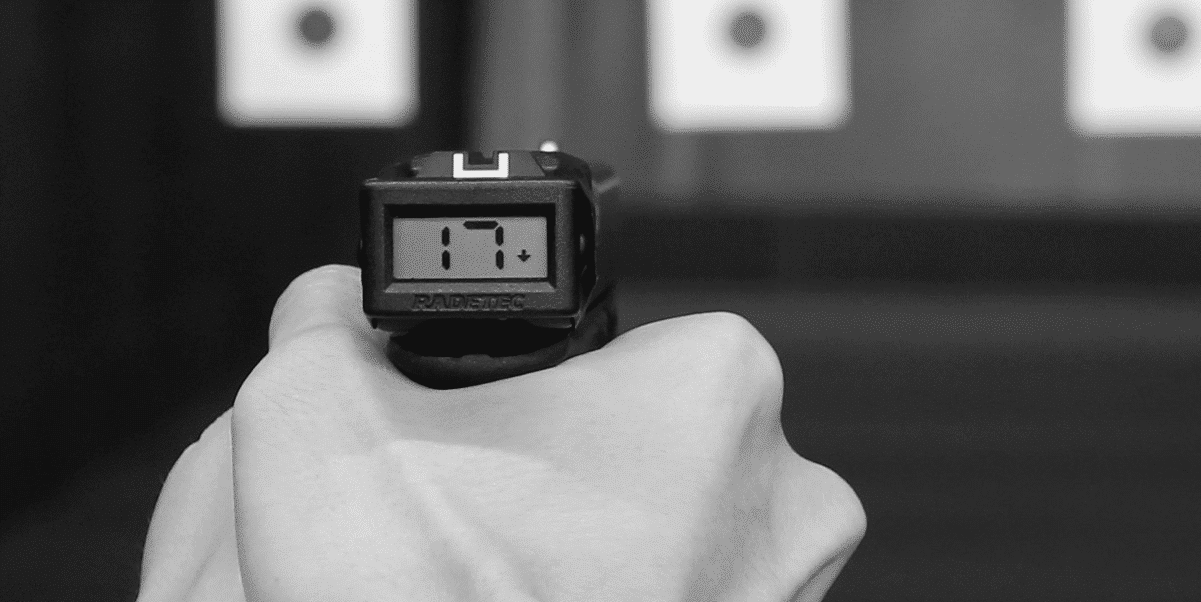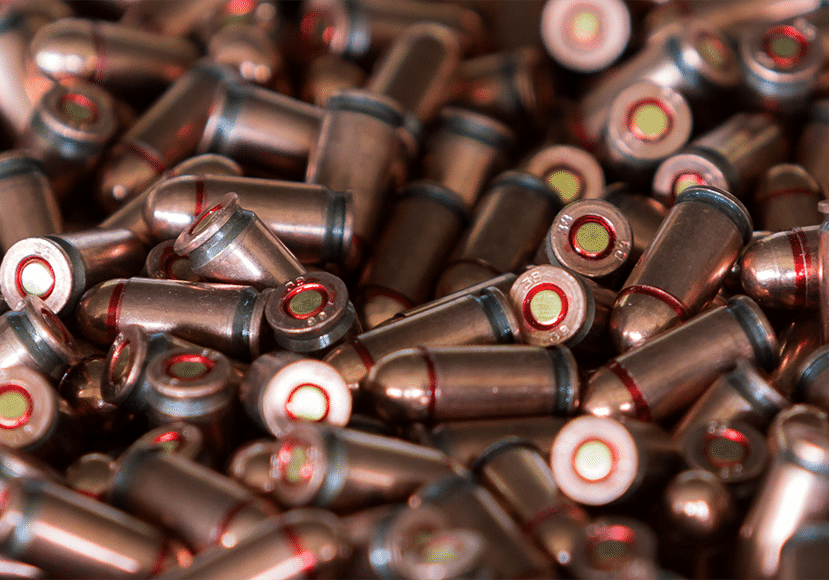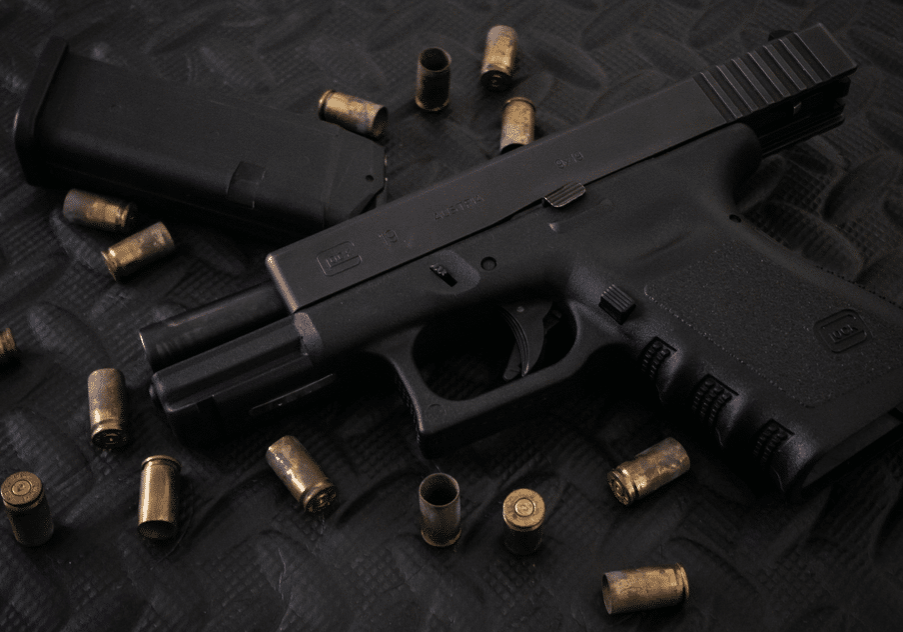A Little-known Firearms Manufacturer May Have Created the First Viable Smart Gun

The so-called “smart gun” seems like a million-dollar idea: a gun that can only be fired by its owner and other authorized users. But nearly 50 years after the concept first entered the public consciousness, not a single viable smart gun is currently on the market.
The delay is primarily political. In 2002, the New Jersey state legislature passed a misguided law stating that as soon as a smart gun was sold anywhere in the United States, New Jersey gun dealers would need to sell exclusively smart guns within 3 years.
As you’d likely expect, the NRA did not take too kindly to a mandate restricting an entire state’s access to traditional firearms. The response was swift and decisive; the largest pro-gun organization in the United States rallied in opposition to the bill, and its members boycotted Smith & Wesson, a historic firearms company that had negotiated a deal with the government to research and create the first prototype smart guns.
The New Jersey smart gun bill, which was intended to encourage smart gun adoption, instead created an indefinite moratorium on smart gun development by every major firearms company. Today, only startups funded by Silicon Valley venture capitalists and anti-gun violence non-profits are making serious efforts to bring a smart gun to market, despite the idea’s clear potential.
Early Smart Gun Designs: The Armatix iP1
Most of the smart gun systems that have been created thus far have been lackluster or poor, primarily because they were unreliable and impractical to use. The most famous of these is the Armatix iP1—a .22 caliber handgun that would only fire if it was within 10 inches of a personalized RFID watch.

The Armatix iP1
To put it bluntly, the iP1 was a disaster. The watch was clunky and looked like it might have been in style 20 years before its release. Furthermore, the system required users not only to wear the watch; they also had to enter a multi-digit PIN each time they unlocked the gun and set a specific length of time (1-8 hours) until the gun would auto-shutdown. The 10-inch range also meant that the gun could only be fired if it was being held in the same hand that the watch was on. If, for whatever reason, a user had to shoot with their off-hand (such as if the primary shooting hand was injured), they would be out of luck.
Perhaps most importantly, RFID smart guns in general suffer from serious security and reliability concerns. These devices are potentially vulnerable to hacking and jamming using technology that is already being used for criminal purposes. The idea that a criminal (or even the government) could detect the radio waves coming from your firearm and remotely disable it was more than enough to convince gun owners that the iP1 was not for them.
The iP1’s creator claims that the product’s failure was purely due to politics and the NRA, but the truth is that it simply didn’t work. Even if you ignore the NRA’s scathing critiques based on first-hand testing, the project was doomed from the start because its safety features interfered too much with the standard shooting experience and the gun was significantly less reliable than pre-existing firearms. As Joseph Steinberg has said, smart guns like the iP1 were likely to make people less safe, not more.
Modern Smart Gun Models
A new generation of smart guns is currently in development that hopes to erase the failures of its predecessors. Leading the charge is Biofire, a smart gun startup founded by Kai Kloepfer, who was just 15 when he designed a handgun that requires fingerprint verification before it can be fired.
“From the very beginning, I’ve used Armatix as an example of everything not to do,” said Kloepfer. “The key difference with us is our product actually works.”
Kloepfer’s smart gun has been featured in dozens of major publications including The Wall Street Journal and The New York Times, indicating that there is a lot of excitement about the product. However, it seems to me that the Biofire smart gun, while potentially valuable, is still not a viable smart gun system in the sense that it could become the new normal for all firearms going forward.
The Biofire smart gun, like all other smart guns that rely on fingerprint scanning, suffers from one obvious flaw: what if the user’s finger is covered with dirt, blood, dust, or sweat? Worse yet, what if the user is wearing gloves?
At first, this might sound like a nitpick. But the reality is that gloves are all but required by police officers in large parts of the country for significant portions of the year. The issue was also brought up in a U.S. Department of Justice report, created collaboratively with numerous law enforcement agencies, on the “baseline specifications” required for law enforcement to consider adopting a smart gun.
Specification 4.18.4 reads, “The security device shall not inhibit the operator from firing in either hand, one-handed or two-handed, with and without gloves, in any orientation.”
Here we see that any RFID smart gun that restricts users from firing in either hand is not a viable option, nor is any biometric (fingerprint, grip, etc.) smart gun that requires users to not wear gloves.
In all of my research on this subject, I have found only one firearm that, assuming it works reliably, would be a viable option for law enforcement based on the above criteria: it’s an unnamed project created by a little-known firearms company called Radetec.
The Radetec Smart Gun
The Radetec smart gun, which was debuted at this year’s NSSF SHOT Show in Las Vegas, does not use fingerprint scanning or RFID. Instead, it uses an electronic device that can be carried anywhere on the body—on a bracelet, in a pocket, or even hidden in a shoe—that according to Radetec, uses the shooter’s body to create a sort of electronic “aura” within which the gun will remain unlocked and ready to fire. The gun can be fired from either hand, regardless of whether the user is wearing gloves, and the gun is unlocked even while it is holstered—ensuring that there is zero delay between when the gun is drawn and when it is ready to shoot.
Here’s a brief video of the gun in action:
Of course, lots of questions remain, including how reliable the system is and whether it can be hacked or otherwise interfered with. A Radetec spokesman told us in an interview that the firearm cannot be jammed in the same way RFID devices can. The system also defaults to an unlocked state if there are any errors, which means that it shouldn’t be disrupted by any other kind of electrical interference that tech-savvy criminals might come up with (though this will have to be thoroughly tested before people will be willing to bet their lives on it). Assuming the above claims are true, this might be the first smart gun system that actually meets law enforcement’s baseline specifications—which would be a big step towards viability in the civilian market.
Radetec tells us that the smart gun itself is finalized and ready for production. At this point, the smart gun’s future is entirely a function of market demand. If the company receives a sufficient order for the devices from law enforcement agencies, Radetec smart guns could be released in as little as 3 months.
However, market demand for smart guns remains uncertain. A viable smart gun can’t just work 99% of the time; it must work every single time. And although smart gun technology is making clear strides toward viability, each system introduces additional complexity and potential points of failure over traditional firearm designs. If smart gun manufacturers want gun owners to get on board, they will have to prove that smart guns’ safety benefits outweigh their potential risks, which isn’t immediately obvious.
Smart guns theoretically have two major applications: preventing accidents resulting from children getting ahold of their parents’ gun, and preventing gun owners from having their gun turned against them in a struggle.
The first use case is straightforward enough, but such accidents could also be prevented simply by parents properly storing their firearms in a locked gun safe. This is something most responsible gun owners—presumably the target market for a smart gun—already do; so it’s unclear how much they’d benefit from a smart gun’s additional safety features.
Likewise, preventing someone from using your gun against you is potentially valuable, particularly for law enforcement officers who are the ones most likely to experience such situations. But it remains uncertain whether this benefit would be enough to outweigh smart guns’ potential reliability concerns and presumably increased cost.
Of course, all of these are moot points in the United States so long as the New Jersey smart gun law is still in effect. The NRA has used its considerable weight to crush previous smart gun sales in the U.S., and you have to imagine they’ll continue to do so until the law is repealed. Still, Radetec’s smart gun appears to be the most promising smart gun system to date, and could therefore be an indicator of where smart gun technology is heading.




